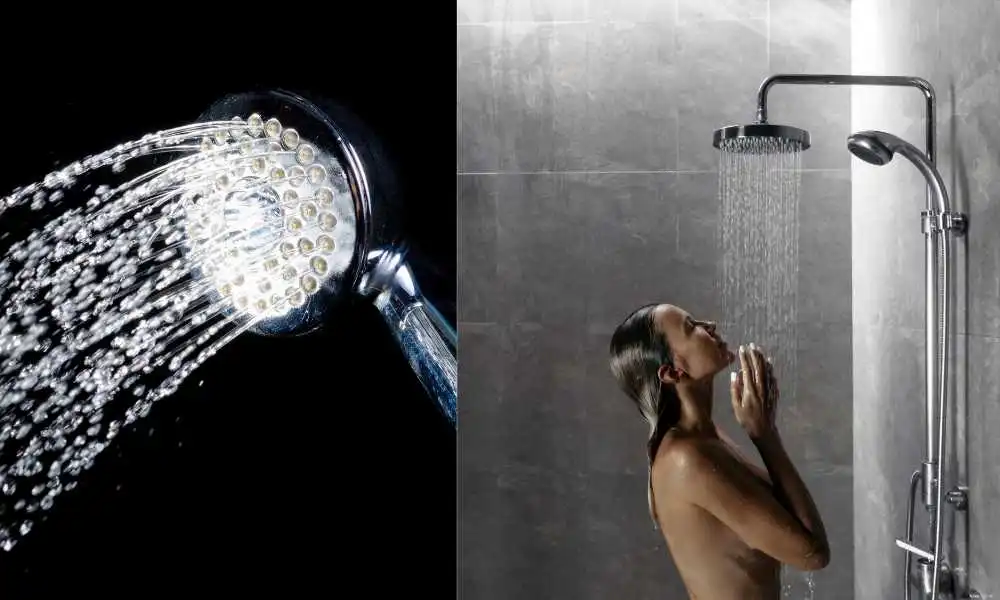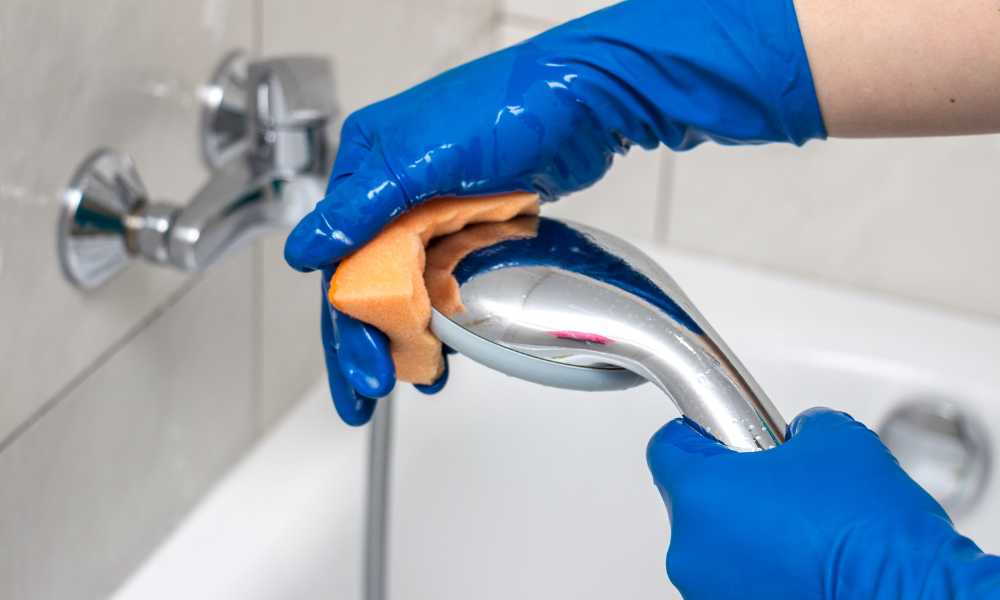Shower stalls, a pivotal component in modern bathrooms, are crafted from a variety of materials to meet diverse preferences and functional requirements. These enclosures not only serve the practical purpose of containing water but also add aesthetic value to the bathroom space. With a 1% keyword density for the term “What Are Shower Stalls Made Of,” this introduction emphasizes the importance of understanding the materials used in their construction. From fiberglass and acrylic to glass and stone, the choice of material can significantly influence the durability, maintenance, and overall look of shower stalls. This overview seeks to shed light on the composition of shower stalls, providing valuable insights for homeowners and designers alike.
What Is The Most Durable Material For A Shower Stall?
Shower stalls serve as a functional and aesthetic centerpiece in many bathrooms, offering a secluded space for bathing. Understanding the materials from which these stalls are made can greatly influence a homeowner’s choice, affecting everything from durability to ease of cleaning. Among the various materials available, one stands out for its exceptional longevity and resilience. The most durable material for a shower stall is often considered to be tile. Tiles, whether made of ceramic, porcelain, or stone, are renowned for their ability to withstand constant moisture, temperature variations, and the wear and tear of daily use. Their versatility in color, size, and pattern also allows for unlimited customization, enabling homeowners to create a space that is both functional and reflective of their personal style.
Common Materials Used In Shower Stalls
1. Tile
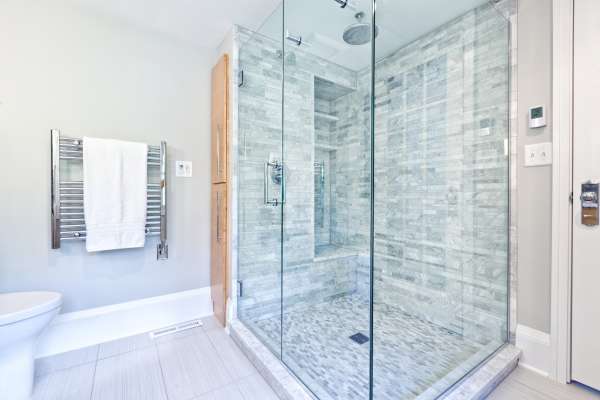
Common materials used in shower stalls include not only the durable tiles but also fiberglass, a material prized for its practicality and cost-effectiveness. Tile, as mentioned, offers unparalleled durability and a classic look that can range from simple and modern to intricate and traditional. Its resistance to mold and mildew, when properly sealed and maintained, makes it an enduring choice for many. On the other hand, fiberglass presents a more budget-friendly option that boasts ease of installation and minimal maintenance. Fiberglass shower stalls are manufactured in a single piece, which eliminates seams that could potentially leak or harbor mold. Although not as robust as tile, fiberglass is lightweight, making it an excellent choice for quick renovations and for use in homes where weight is a concern, such as in mobile homes or upper-floor bathrooms.
2. Fiberglass

Each material brings its own set of advantages to the bathroom environment. Tiles offer a timeless aesthetic and the promise of longevity, appealing to homeowners looking for a long-term solution with a touch of personalization. Fiberglass, with its seamless construction and lower cost, provides a practical and efficient alternative for those prioritizing ease and speed of installation. By weighing the benefits of these materials, individuals can make informed decisions that align with their budget, lifestyle, and design preferences, ensuring their shower stall remains a cherished feature of their home for years to come.
3. Acrylic
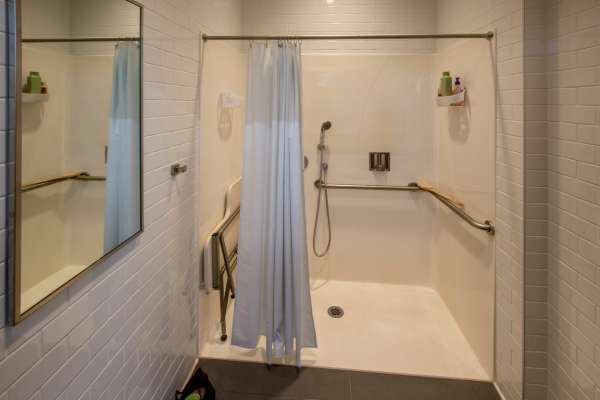
Acrylic is favored for its versatility and warmth. Unlike the cooler touch of tiles and stone, acrylic provides a warmer surface. Making it more comfortable against the skin during showers. It’s a lightweight material, which simplifies the installation process, particularly in situations where heavy materials might pose a challenge. Acrylic shower stalls are renowned for their resistance to staining and their ease of maintenance. Scratches on the surface, if any, can be easily buffed out, ensuring the shower stall retains its new look for a longer period. Furthermore, acrylic can be molded into various shapes. And sizes, offering flexibility in design that can suit any bathroom layout and preference.
4. Stone
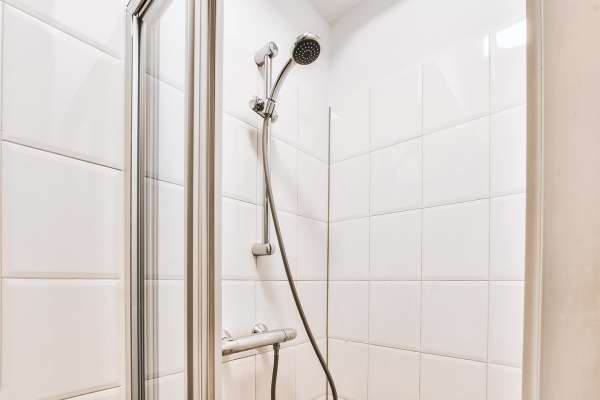
Stone, on the other hand, brings a slice of nature into the bathroom with its unmatched beauty and uniqueness. Materials such as marble, granite, and slate are commonly used in high-end bathroom designs. Stone shower stalls are incredibly durable and can last a lifetime with proper care. They are resistant to scratches and, similar to tile, can handle the humid and wet conditions of a bathroom with ease. However, stone requires regular sealing to maintain its resistance to water and to prevent staining. The natural variations in color and pattern of stone materials ensure that each shower stall is distinct, offering an exclusive, luxurious feel to the bathroom.
5. Glass
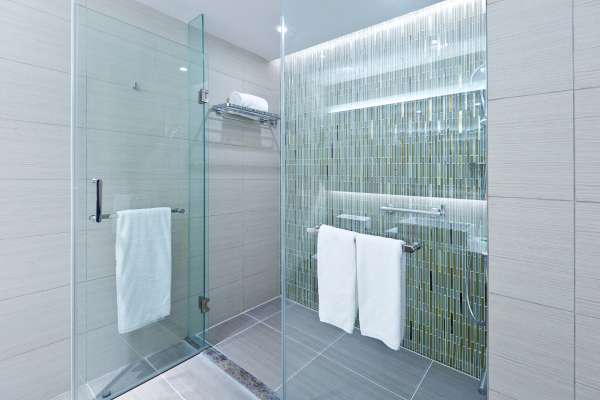
Glass is another popular material, often used in conjunction with other materials like tile, stone, or acrylic to create shower enclosures. Tempered glass panels are strong, safe, and add a modern, spacious feel to the bathroom by allowing light to flow freely throughout the space. Glass can be clear, frosted, or patterned, providing varying degrees of privacy while contributing to the overall aesthetic appeal of the shower stall. Its sleek and minimalistic look is highly sought after in contemporary bathroom designs. While glass is easy to clean and maintain, it does require regular cleaning to prevent water spots and to keep the shower looking pristine.
Factors To Consider When Choosing Shower Stall Material
1. Cost Comparison
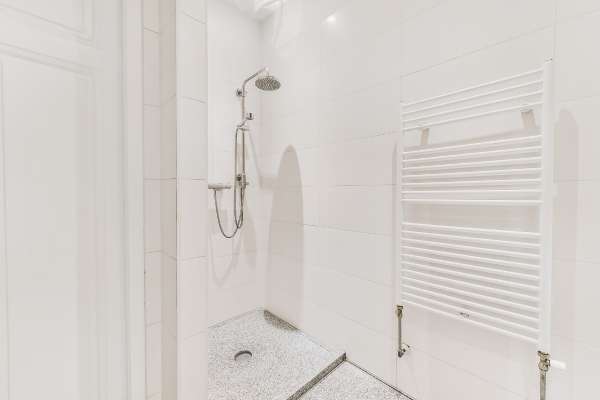
The initial cost of materials for shower stalls can vary widely, making it a critical factor for many homeowners. Acrylic and fiberglass options tend to be more budget-friendly, offering a cost-effective solution without compromising too much on durability and appearance. These materials are manufactured in a way that allows for lower production and installation costs. On the other hand, stone and high-end tiles like porcelain can significantly increase. The expense due to the materials themselves and the labor-intensive installation they require. Glass enclosures, depending on the thickness and type of glass chosen, can also vary in price. Potentially adding a considerable amount to the overall bathroom renovation budget. Therefore, when comparing costs, it’s essential to consider not only the price of the materials but also. The installation expenses and the long-term value they add to the property.
2. Durability and Maintenance
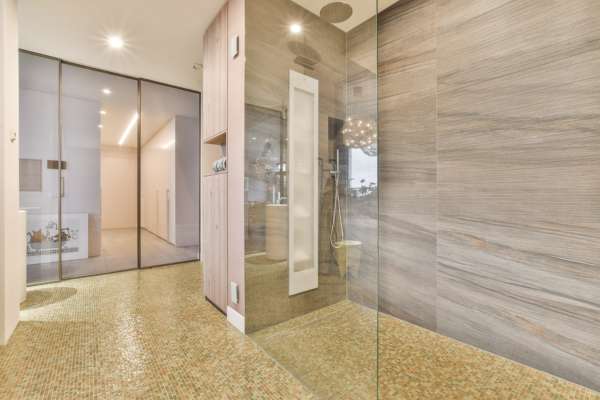
Durability and the level of maintenance required are equally important when choosing a shower stall material. Materials like tile and stone boast high durability. Capable of withstanding the rigors of daily use while maintaining their appearance for years. However, they may require more maintenance, such as regular sealing, to protect against water damage and staining. Acrylic and fiberglass, while not as robust as stone or tile, offer a non-porous surface that is easier to clean and less susceptible to mold and mildew. Glass, especially tempered glass, provides a durable option for enclosures. Though it will require consistent cleaning to prevent water spots and build-up.
3. Aesthetic Appeal
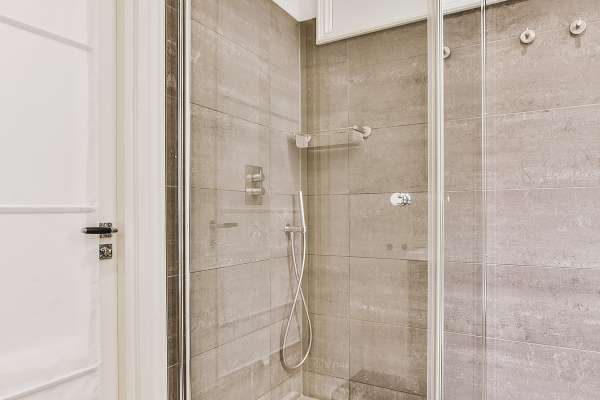
The visual aspect of a shower stall plays a pivotal role in the overall ambiance of a bathroom. Each material offers a unique aesthetic that can complement or define the bathroom’s design theme. For instance, stone and tile bring natural beauty and timeless elegance, allowing for a range of styles from rustic to modern. Acrylic and fiberglass offer a sleek, seamless look that can fit effortlessly into minimalist or contemporary designs. Glass enclosures provide a sense of openness and light, making the bathroom appear larger and more inviting. The choice of material should harmonize with the homeowner’s personal style and the desired atmosphere of the space. Making aesthetic appeal a crucial factor in the selection process.
4. Environmental Impact
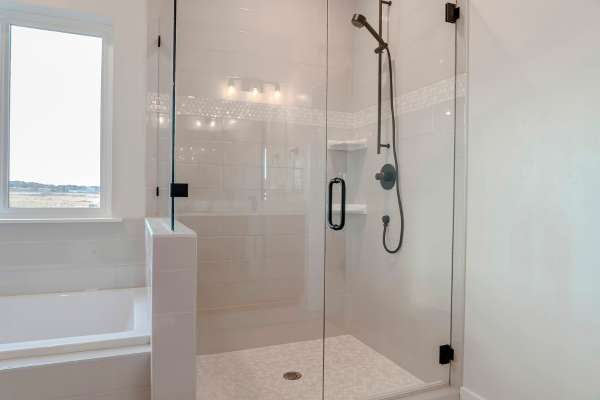
In today’s eco-conscious world, the environmental impact of building materials has become an important consideration for many. Sustainable materials or those with a lower environmental footprint are increasingly preferred. Stone, while durable and natural, often requires significant energy for extraction and transportation. On the other hand, some tiles can be made from recycled materials, offering a more eco-friendly option. Acrylic and fiberglass, being synthetic, might not be the first choice for those looking to minimize their environmental impact. Though advances in recycling technologies and green manufacturing practices are helping to mitigate these concerns. The production process, the potential for recycling at the end of life. And the material’s longevity are all factors that influence the environmental impact of shower stall materials.
5. Customization Options
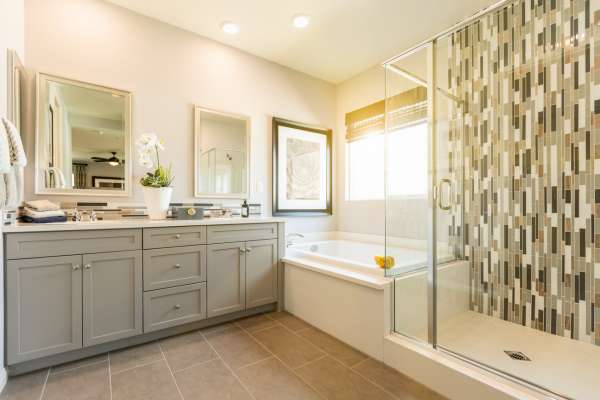
The ability to customize the look and feel of a shower stall is important for homeowners seeking to create a personalized bathroom space. Tile offers almost unlimited customization options, from patterns and colors to textures and sizes. Stone provides a unique, natural look with each piece being inherently one-of-a-kind. Acrylic and fiberglass are available in a wide range of shapes and sizes due to their manufacturing process. And while customization options may be somewhat limited compared to tile, they still offer a variety of finishes and colors. Glass can be customized in terms of transparency, etching, and framing, providing flexibility in design. The level of customization available can greatly affect the final look of the bathroom. Making it a significant factor in material selection.
Popular Brands and Manufacturers
In the tile sector, brands like Daltile, Marazzi, and Porcelanosa are known for their high-quality ceramic, porcelain, and natural stone tiles, offering a wide range of designs that cater to both traditional and contemporary tastes. For those considering stone, companies such as Walker Zanger and Ann Sacks provide luxurious options in marble, granite, and other natural stones, emphasizing unique textures and patterns.
When it comes to acrylic and fiberglass shower stalls, names like Kohler, American Standard, and Delta stand out. These manufacturers are celebrated for their durable, easy-to-install shower units that come in a variety of shapes and sizes to fit any bathroom layout. Their products often feature innovative technologies for water conservation and antimicrobial surfaces, enhancing the user experience.
Glass shower enclosures are expertly crafted by brands such as DreamLine and VIGO, which specialize in high-quality tempered glass that ensures safety and longevity. These companies offer a range of customization options, from frameless designs that emphasize sleek, modern lines to textured glass that provides privacy without sacrificing light.
Conclusion
Choosing the right material for a shower stall is a multifaceted decision that involves balancing cost, durability, maintenance, aesthetic appeal, environmental impact, and customization options. Recognizing the strengths and limitations of materials like tile, fiberglass, acrylic, stone. And glass allows homeowners to make informed choices that align with their practical needs, design preferences, and environmental values. Additionally, considering the offerings of reputable brands and manufacturers can guide consumers towards high-quality products that deliver satisfaction and durability. Ultimately, the selected shower stall material and brand should enhance the bathroom’s functionality. And style, creating a space that is both inviting and reflective of the homeowner’s personal taste. This thoughtful approach ensures that the shower stall will be a cherished aspect of the home for years to come.

